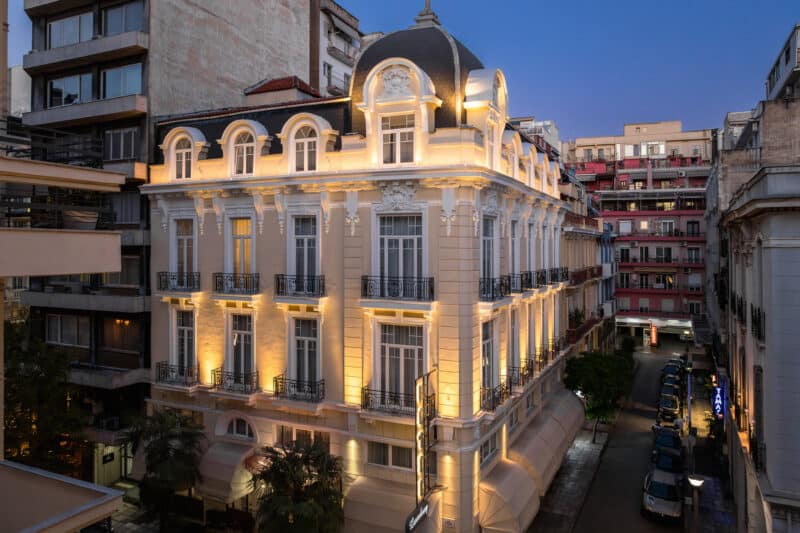Lighting design is an often underappreciated yet essential aspect of architecture and interior design. The interplay between light, form and materiality can dramatically transform spaces, accentuate architectural elements and reveal the textures of objects. Through careful manipulation of light, designers can create environments that evoke specific emotions, highlight details and enhance the overall aesthetic experience. This blog post explores how lighting serves as a medium to enrich architectural design, focusing on its relationship with form and materiality.
The Relationship Between Light and Form
Light is integral to perceiving and appreciating architectural forms. The way light interacts with different shapes and volumes can either obscure or highlight their presence. For instance, natural daylight streaming through windows can cast dramatic shadows, enhancing the three-dimensional quality of a space. Similarly, artificial lighting can be strategically placed to emphasize certain architectural features such as columns, arches, or staircases.
Example:
A well-lit staircase can transform from a mere functional element to a sculptural focal point. By using spotlights or linear LED strips, designers can highlight the edges and contours of the steps, creating a visually striking element that draws the eye and enhances the perception of depth and dimension.

Light Revealing Materiality
Materiality in architecture refers to the choice and use of materials in the design and construction of buildings. Light can significantly influence how these materials are perceived. For example, the texture of a brick wall, the grain of wooden panels, or the sheen of a polished stone surface can be accentuated or diminished depending on the lighting.
Example:
Consider a textured concrete wall. When light grazes the surface, it creates shadows within the texture, emphasizing its roughness and adding a tactile quality to the visual experience. On the other hand, direct lighting might flatten the appearance, reducing the textural impact.
In order to emphasize the roughness of the surface and add a tactile quality to the visual experience, a special type of optical luminaire features is needed that creates shadows within the texture (wall grazing). On the other hand, lighting with a symmetrical beam angle can flatten the appearance, reducing the impact of the texture.

The Role of Natural Light
Natural light is dynamic and constantly changing, bringing a space to life in ways that artificial lighting cannot replicate. Architects and designers often use natural light to enhance the interaction between form and materiality.
Example
In a room with large windows, the shifting sunlight throughout the day can create a play of light and shadow that highlights different elements and surfaces. The warm glow of the morning sun might accentuate the warmth of wooden floors, while the cooler light of the afternoon might enhance the sleekness of metal fixtures.

Artificial Lighting Techniques
Artificial lighting allows for greater control and precision in highlighting architectural elements and materials. Different techniques, such as accent lighting, task lighting, and ambient lighting, serve various purposes in a design scheme.
Accent Lighting
This technique is used to draw attention to specific features within a space, such as artworks, architectural details, or textured surfaces. Spotlights or wall-mounted fixtures can direct light precisely where it is needed, creating focal points.
Example
A feature wall with a unique material, like reclaimed stone, can be illuminated with accent lighting to become a centerpiece of the room.

Task Lighting
Designed to provide functional lighting for specific tasks, this technique ensures that activities like reading, cooking, or working can be performed comfortably and efficiently. Task lighting can also contribute to the overall aesthetic by incorporating stylish lamps and fixtures.
Example
A sleek desk lamp not only provides focused light for work but also adds a design element to a modern office space.

Ambient Lighting
This refers to the general illumination of a space, creating a uniform light level that allows for safe movement and a comfortable atmosphere. Ambient lighting can be achieved through ceiling fixtures, wall sconces, or indirect lighting solutions like cove lighting.
Example
A living room with recessed ceiling lights and strategically placed floor lamps can create a warm and inviting ambiance.

Conclusion
Lighting design is an art form that profoundly impacts the perception of architecture and interior spaces. By thoughtfully integrating light with form and materiality, designers can enhance the visual and tactile experience of a space. Whether through natural or artificial means, light reveals the true essence of materials, highlights architectural features, and shapes the overall mood of an environment. As a medium, light is powerful and versatile, capable of transforming spaces and enriching our interaction with the built world.
Text Editor: Ivana Paparizou – Lighting Consultant



